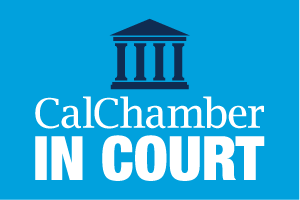In this episode of The Workplace podcast, CalChamber Executive Vice President and General Counsel Erika Frank and employment law expert James Ward discuss key points and guidelines issued by the U.S. Department of Labor (DOL) on the Families First Coronavirus Response Act (FCCRA), which takes effect today, April 1.
Frank points out that the guidelines and requirements surrounding the FCCRA have been changed recently and can be changed at any moment by the DOL. She recommends that listeners regularly visit the DOL website to ensure they have the most up-to-date information. Listeners also can visit calchamber.com/Coronavirus for updates on federal and state programs related to the COVID-19 pandemic.
Requirements, Exemptions
Time discussed: 02:30
On March 18, the federal government passed Families First Coronavirus Reponses Act (FCCRA), which includes the Emergency Paid Sick Leave Act (EPSL) and the Family Medical Leave Expansion Act (EFMLA). Both leaves are temporary and will sunset on December 31, 2020, Frank explains.
Both leaves apply to employers with fewer than 500 employees. Health care providers and emergency responders, however, are excluded from the paid family leave, Ward says. Moreover, employees are eligible for the EFMLA if they have been employed for a minimum of 30 days; employees are eligible for the EPSL from the first day of hire.
There is a small business exemption provision that exempts employers with fewer than 50 employees from the EFMLA and EPSL if the leave requested is for child care and school closures related to COVID-19, Ward explains.
According to the DOL, a small business may claim this exemption if an authorized officer of the business has determined that one of the following three criteria applies:
- The provision of paid sick leave or expanded family and medical leave would result in the small business’s expenses and financial obligations exceeding available business revenues and cause the small business to cease operating at a minimal capacity;
- The absence of the employee or employees requesting paid sick leave or expanded family and medical leave would entail a substantial risk to the financial health or operational capabilities of the small business because of their specialized skills, knowledge of the business, or responsibilities; or
- There are not sufficient workers who are able, willing, and qualified, and who will be available at the time and place needed, to perform the labor or services provided by the employee or employees requesting paid sick leave or expanded family and medical leave, and these labor or services are needed for the small business to operate at a minimal capacity.
Leave Time, Intermittent Leave
Time discussed: 08:14
Given that California already has a mandatory sick leave requirement law and many employers already provide additional sick leave benefits, Frank asks Ward, are the new federal leaves in addition to state-mandated leaves/employer-provided benefits, or can the leaves run concurrently?
The federal leaves are in addition to state- or employer-provided paid sick leaves, Ward answers. Moreover, the leaves are not retroactive, so if an employer already has provided an employee with leave for one of the COVID-19-related reasons of the EFMLA or EPSL before April 1, that time cannot be deducted from the EFMLA or EPSL.
Concerning the EFMLA, the provision will be treated as an additional qualifying event to the Family Medical Leave Act (FMLA) and does not provide an additional 12 weeks to the original FMLA, Ward explains.
Another common question that is arising, Frank says, is whether employees can use the new federal leaves intermittently—whether taking half of the day off or taking off only certain days.
The availability of intermittent leave will depend on the type of worker, Ward replies. Employees working remotely may use intermittent leave under both the EFMLA and EPSL, in any increment, given that the employer agrees to the arrangement.
For nonremote workers, the EPSL must be taken in full-day increments (unless there an is a school closure or issue of child care availability). Leave under the EFMLA, however, may be taken intermittently with the employer’s permission.
Documentation
Time discussed: 17:14
Since employers will be receiving a tax credit for any EFMLA or EPSL leave provided, proof documentation will be required.
A list of eligible documents has not yet been released by the DOL, but Ward suggests that in the event that an employee requests leave due to reasons covered by the EFMLA or EPSL, employers should collect documentation such as quarantine orders from government officials, written documentation from a health care provider, or, in the event of a school closure, an email notice from the school or child care center, or an online notice printout.
New Posting Requirement
Time discussed: 20:40
The DOL also has issued a required notification poster for the Families First Coronavirus Response Act. In addition to posting the notice in the workplace, employers also need to either mail or email a copy of the notice to employees working remotely, Ward says.

